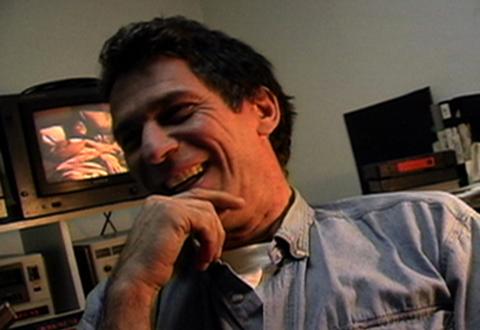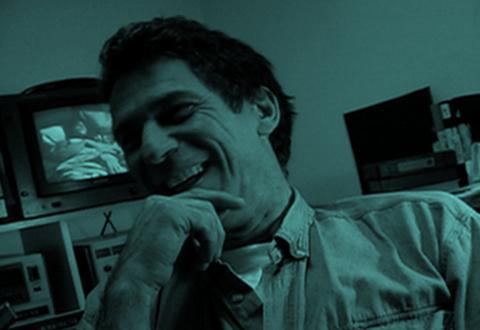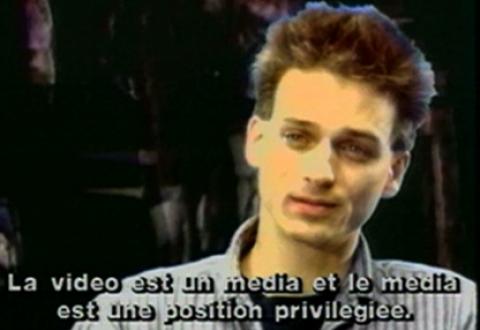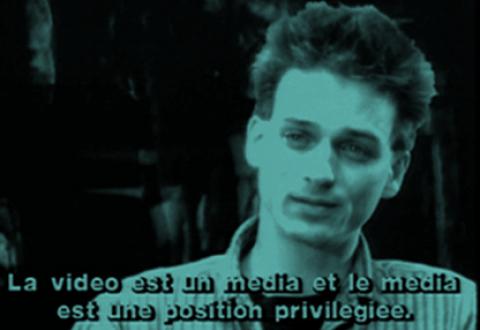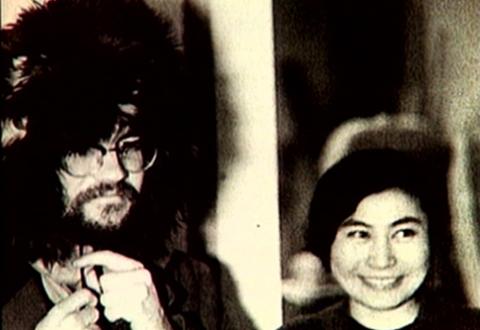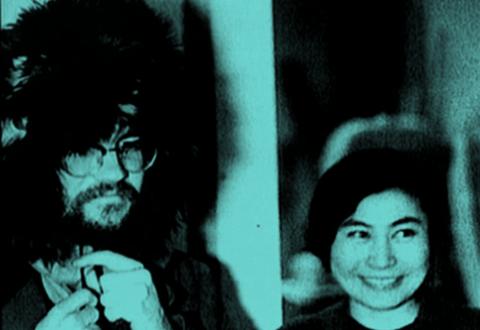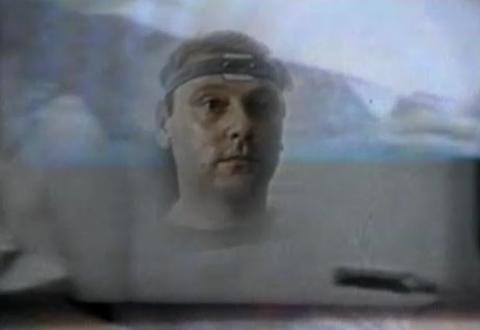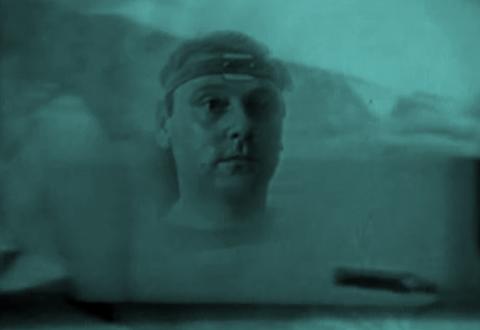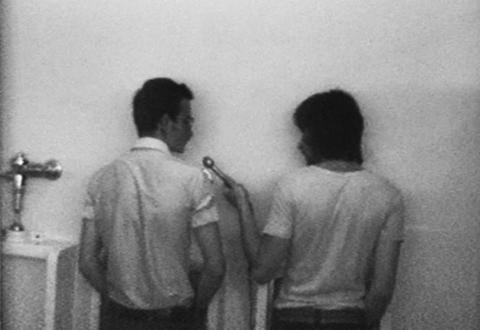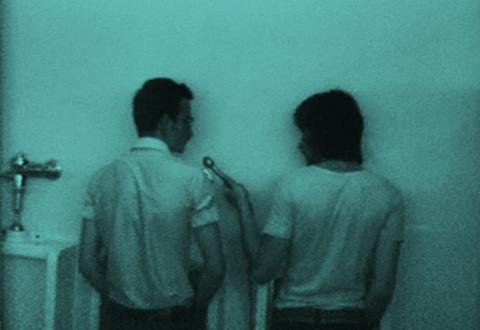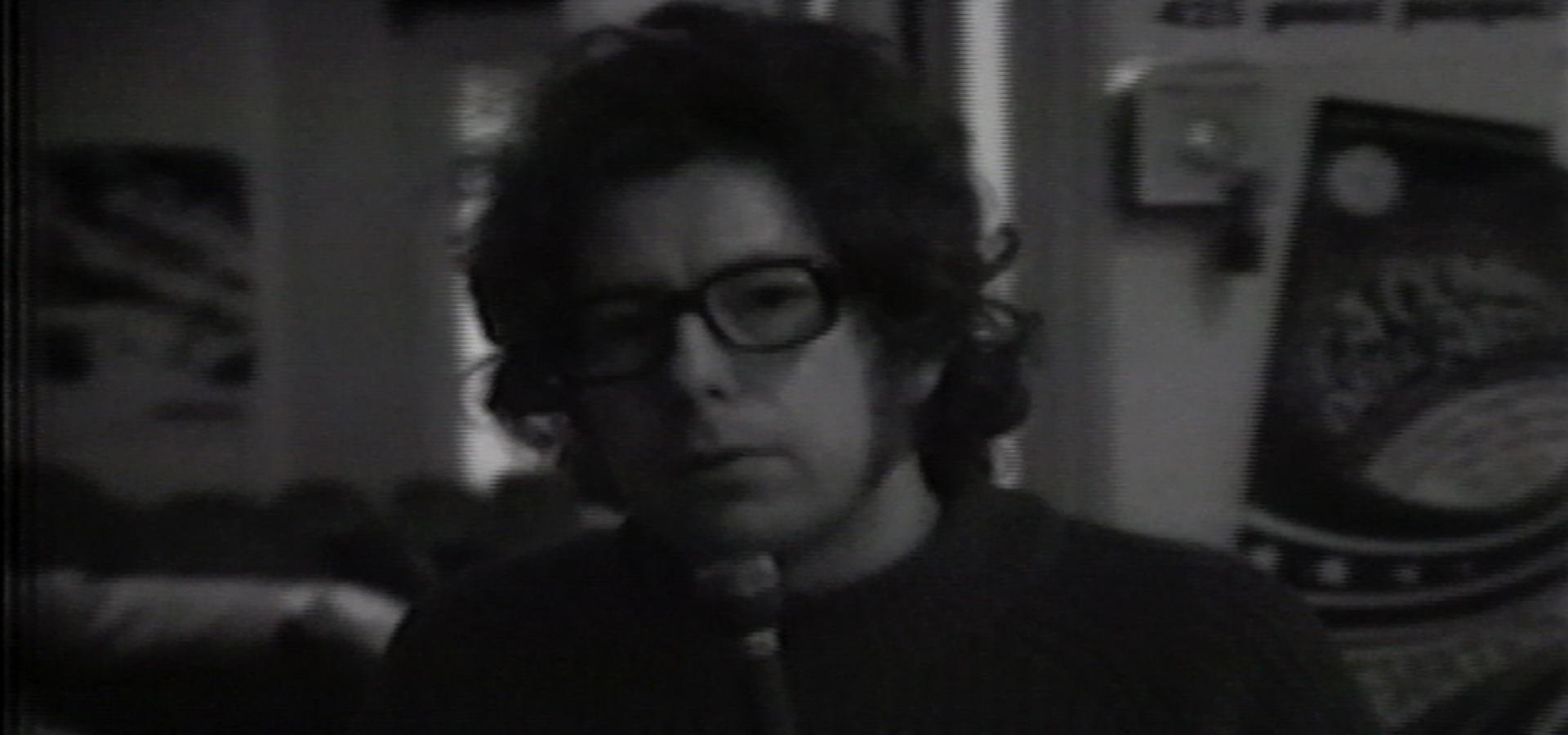
Video Art: The Archives of its History - Vidéographe vu et par : Memory in Elliptical Form: The Phosphorous Archives
To map a history of the origins of Quebec video. To write a memoir, because of the black hole of course. To close our eyes to see, to better see what is lodged beneath the underside of our eyelids crisscrossed by phosphenes. Luminous writing, the vital images on Vidéographe’s collection of black tapes.
Vidéographe vu et par, made by René Roberge in 1991, is an imposing work of memory. By excavating from the archives of the Vidéographe collection significant video segments, flickering landmarks of the first twenty years of independent video in Quebec, Roberge has traced the history in constellations of the technological developments, aesthetic devices and new forms of writing those years produced. His project takes an enlightening socio-historical perspective that doggedly imposes it as a Phosphorous Archive and which names video as the medium of individual and collective memory.
Vidéographe: A Few Milestones
The emergence of a new technology in the mid-1960s – recording on video tape – was seen by a few individuals – artists and communicators – as new tool for communication. Video offered a glimpse of a broad range of experimental possibilities that would define the medium’s singularity.
Motivated for the most part by this intention and spurred on by a few experiments in television in New York, Vidéographe opened its doors on St. Denis Street in November 1971.
Launched in an atmosphere of intellectual and social ferment, which the organisation’s archives eloquently depict, Vidéographe was the first video production centre in Canada.
A unique site for artistic exploration and experimentation, a singular laboratory with a remarkable infrastructure for its day, the organisation made it possible for anyone who wanted to make a video to do so.
Growing out of the National Film Board’s Société nouvelle (“Challenge for Change”) program, right from the start Vidéographe established the parameters of the social interventions which today remain the pillars of its foundation. Among the most important of these are the production centre, a distribution arm and a public screening room, naturally accompanied by the archiving of videos which, over the years, has grown into an impressive collection.
In 1973, when Vidéographe was incorporated, it terminated its relationship with the NFB and became a non-profit organisation whose mandate was to promote and distribute independent video. Since that time, the diversity and relevance of its activities has demonstrated its undeniable vitality and social involvement. Indeed the organisation’s resistance makes clear its consistency, for “the most astonishing thing about Vidéographe’s adventure is still the force of its endurance, transformed throughout its history by the prevailing mood and the energy of the people involved with it”. (1)
(1) Robert Forget, Répertoire A.Z, Vidéographe, p. 3.
-----------
Documentary Resources:
Aumont, Jacques, L'image, Paris, Nathan, 1990
Belloir, Dominique, Vidéo Art Exploration, Cahiers du cinéma, numéro hors série, 1981
Dion, Daniel, Cron, Marie-Michèle, Circonvolutions, exhibition catalogue, Carrillo
Gil art museum, Mexico City, June 20 to July 7, 1995
Dubois, Philippe, Vidéo et écriture électronique. La question esthétique, dans Esthétique des arts médiatiques, Tome 1, Montréal, éd. Presses de l’Université du Québec, 1995
Duguet, Anne-Marie, Vidéo, la mémoire au poing, L'Echappée Belle, Paris : Hachette, 1981
Duguet, Anne-Marie, Déjouer l’image. Créations électroniques et numériques, éd. Jacqueline Chambon, 2002
Fozza, Jean-Claude, Garat, Anne-Marie, Parfait, Françoise, Petite fabrique de l’image, Magnard, 2003
Gingras, Nicole, Revoir la collection, catalogue, Vidéographe, Nicole Gingras, 1997
Langlois, Monique, L'image vidéo ou le concept de représentation traversée par la technologie, Esthétique des arts médiatiques, T. 2, Presses de l'Université du Québec, Sainte-Foy, 1995, p.211-224
Video re/View, the (best) source for critical writings on canadian artist’s video, ed. Peggy Gale and Lisa Steele, Art Metropole and V tape, Toronto
Martin, Sylvia, Video Art, Tashen, 2006
Parfait, Françoise, Vidéo : un art contemporain, éditions du Regard, Paris, 2001
Payant, René, Vidéo, Montréal, éd. Artextes, 1986
Payant, René, Vedute, pièces détachées sur l’art, 1976-1987, éd. Trois, 1987
Poissant, Louise (dir.), Esthétique des arts médiatiques, tome 1- 2, Coll. esthétique, Presses de l’université du Québec, 1995
Ross, Christine, Images de surface : l’art vidéo reconsidéré, éd. Artextes, Montréal, 1996
Ross, Christine, Identity Dispersions, exhibition catalogue, Toronto, Art Gallery of Ontario, 1994
Rush, Michael, Video Art, London: Thames & Hudson, 2007
Imaginaires du numérique, Spirale, janvier-février 2003, no 188
Où va la vidéo?, Cahiers du cinéma, no hors série, Paris éd. de l'Étoile, 1986
Paysages de la vidéo, catalogue d’exposition, commissaire Monique Langlois, UQAM, 1994
Vidéo, Communications no 48, éd. Seuil, 1988

